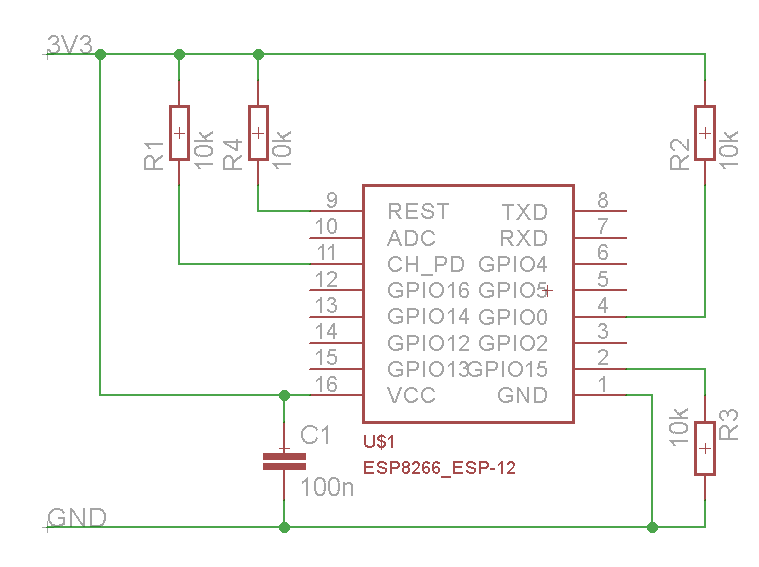Having tons of issues with my first attempts at using this board. I have a lot of experience using arduino's and various microcontrollers, but my current project requires WiFi connectivity. I ordered the esp-12 and have had trouble getting it to be stable at all.
No matter what sketch I use, even if it just a loop printing to serial, it is unbelievably unstable. It will print fine for a while, then non stop exception errors and stack traces. The exception numbers vary each time, usually 0/29/8. It's just super intermittent. It will work fine for 20 minutes and then just spam errors until I reset and re upload my sketch. I notice that it occurs almost every time I reset the board.
I assume it is something with my power setup, since it seems like they are very sensitive, but I think I am doing it right. I'm using this schematic for the board:

A CP2102 Serial cable: https://www.amazon.com/gp/product/B01A0BOGHG/ref=oh_aui_detailpage_o03_s01?ie=UTF8&psc=1
Voltage is regulated with a LD1117V33 voltage regulator, from a 2AMP 5V wall power supply.
I connect the serial cable's 3.3v power to my common power rail, because it doesn't upload without that (I feel like this may be my issue).
I'm really bad at drawing schematics, so here's a picture of my voltage regulator board and the esp board. To upload I bring GPIO0 to low and have reset low and as it starts to upload bring it high. Thanks a lot for any help.


EDIT: Also, forgot to add, I started using it just as it came without flashing any new firmware. I thought that it could be the issue, but then I flashed the lasted nodemcu, and there was no change.